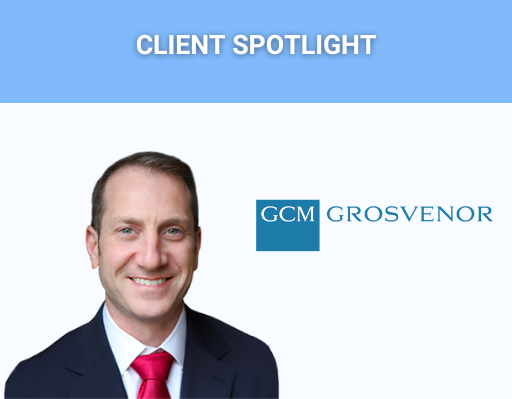Client Spotlight: GCM Grosvenor

Canoe Intelligence talked with Eric Levin, Chief Technology Officer at GCM Grosvenor about his experience managing alternatives documents and data, and how Canoe has helped the firm automate traditionally manual workflows and support business growth.
GCM Grosvenor (Nasdaq: GCMG) is a global alternative asset management solutions provider
with approximately $71 billion in assets under management across private equity,
infrastructure, real estate, credit, and absolute return investment strategies. The firm has
specialized in alternatives for more than 50 years and is dedicated to delivering value for clients
by leveraging its cross-asset class and flexible investment platform. GCM Grosvenor’s
experienced team of approximately 520 professionals serves a global client base of institutional
and high net worth investors. The firm is headquartered in Chicago, with offices in New York,
Toronto, London, Frankfurt, Tokyo, Hong Kong, and Seoul. For more information, visit:
gcmgrosvenor.com.
Q1: As an innovative asset manager, what types of technologies have you implemented in the past few years? Which have made the most impact?
Over time, we have built and integrated industry-leading platforms to enable and transform our operations in all areas, from the first client touch through closing the books each quarter and reporting to clients. Much of our energy goes into building our data fabric – a proprietary platform for how we move data around the organization and democratize access for citizen developers, business users, technologists, and, most importantly, our clients.
We also have an intentional focus towards automating our business processes for efficiency and scalability. Our integration of third-party solutions has had a substantial impact. We have strategically incorporated technologies and platforms that are both specific to the investment industry and industry-agnostic.
- Canoe Intelligence
- iLevel
- DealCloud
- Salesforce
- Unqork
- PowerBI
- SiSense
- Tableau
- Exchangelodge
Q2: Managing multiple verticals of alternative investments can potentially be more operationally challenging. What are some of the unique operational aspects of supporting each vertical?
The most pervasive challenges facing the alternatives industry at large are dealing with data availability, data quality, and constructing a coherent operational model across different asset classes. Our proprietary data fabric provides a consistent foundation on which we can leverage superior technologies that address specific business needs. Consequently, we avoid pigeon-holing ourselves to applications based on asset class or line of business.
For example, numerous similarities exist between asset classes such as private credit, private equity, and more liquid credit, as well as across the ways we invest (co-investing, direct investing, fund investing, bespoke products, etc.). As a result, we look at the underlying character of our investments to drive technology selection, which enables us to scale effectively and best utilize technology solutions.
Further, our broad toolset and exposures across alternatives allows us to leverage solutions modularly to support increasingly complex product structures.
Q3: How specifically have you been able to leverage technology to streamline your operational processes? If so, what are some examples within specific investment verticals?
In our Absolute Return Strategies business, using an analytics-driven, exception-based oversight model, we enabled our accounting team to manage six times more portfolios than before by eliminating redundant processes. Similarly, in our Private Equity, Real Estate, and Infrastructure businesses, by moving from a “vertical” view of the world (portfolio-by-portfolio) to one that is “horizontal” (deal-by-deal across portfolios), we are much more efficient.
Our goal with Canoe is to implement fully automated general ledger bookings for investment partnership capital statements (PCAPs) and notices, such as capital calls and distributions.
Q4: Since implementing Canoe Intelligence technology, what types of efficiencies have you experienced?
In the first two months since implementing Canoe, our document processing power has meaningfully increased. Now ~30% of documents received are automatically booked in our general ledger, a significant time savings.
Q5: Are there other benefits you have realized from implementing Canoe’s technology?
We view the document ingestion I just described as the “tip of the spear.” In addition, Canoe technology also enabled us to take a fresh look at our downstream processes and identify opportunities for automation and efficiencies. This process re-imagination is well-aligned with our intense focus on enabling our employees, clients, and the industry at large to better leverage data when making investment decisions.
Q6: What is your ideal state for alternative investment operations?
Our goal is full automation of manual work, and we envision Canoe and other technologies guiding us toward that goal. Our workforce’s expertise is among the firm’s greatest assets, and we believe that we can best serve our clients and stay at the forefront of the industry by allowing our teams to focus on the most meaningful and value-add work.